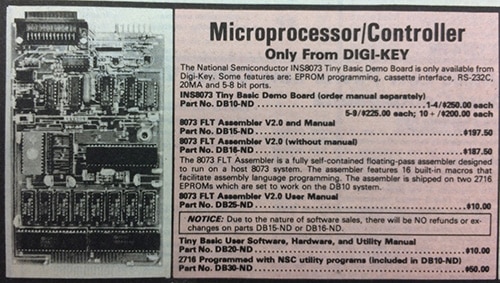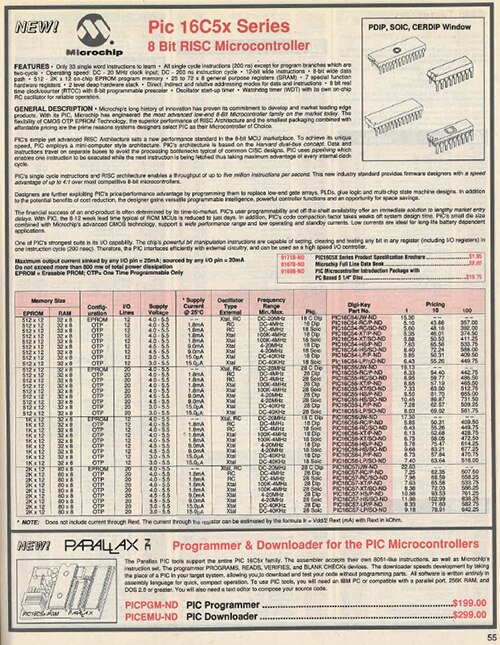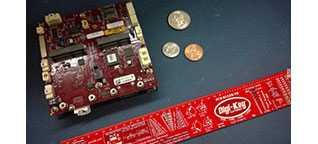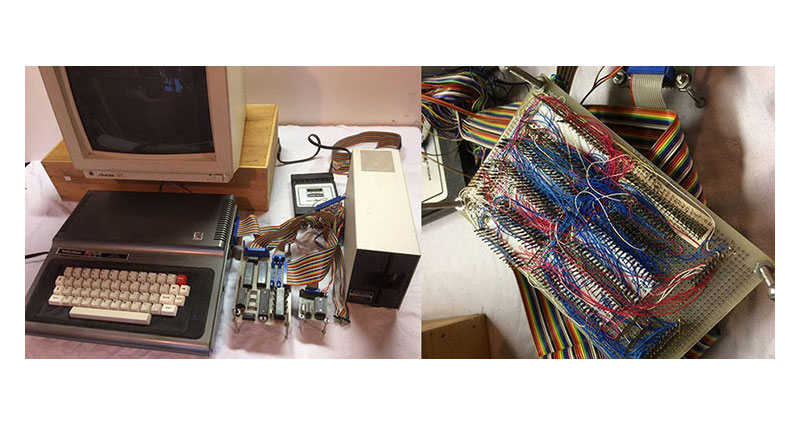Blast from the Past...

I recently had to venture up into my attic to solve a bathroom vent problem and rediscovered my stored away box of electronics covered in insulation and dust. Scraping it off and taking it down to my lab for inspection, I realized what I had forgotten about…
Dating myself here, but the days of getting into microprocessors back in 1983 and hacking my old CoCo computer (formerly known as The Color Computer which originally had 4k but I upgraded it to 16K ☺, LOL), came alive again when I opened the box. It brought out the exciting adventure of making an actual computer board using the old Motorola 6809, learning assembly language, and using wire wrap pins and a perf board to create it.
Soldering a ribbon cable to the mother board under the card edge connector gave me access to the port’s i/o lines for my computer board. I wrote assembly language in a program called EDTASM and used a 5 ¼ inch floppy disk drive to run the program. Using a programmer board to burn in my assembled program to an EPROM, I then inserted it to the computer board for testing where I experimented with stepper motors to run a homemade plotter.
As technology and the embedded world evolved, things kept getting better. I was hired by DigiKey in 1984 to support a popular item called the DB10 board, which was a tiny basic computer board from National Semiconductor that used a CRT (cathode ray tube or terminal which resembled a small TV) and keyboard to write basic programming language where you could easily get to the peripheral adapter ICs and output to a transistor driver for driving stepper motors, lighting LEDs, or sending a message to a LCD dot matrix display.
 Excerpt from DigiKey catalog
Excerpt from DigiKey catalog
Again, as technology evolved, the microcontroller was created. It basically combined all areas of a microprocessor system - i.e., microprocessor, address decoding, static memory, program memory, peripheral interface adapter ICs, oscillator, and capacitors.
 Excerpt from DigiKey catalog
Excerpt from DigiKey catalog
In the early 90s we added the PIC line of microcontrollers with an inexpensive programmer from Parallax Inc (at that time it was the lowest cost programmer for our customers). Appearing in over 6 million catalogs mailed out, this unique combination skyrocketed sales of MCUs and the revolution began. Since then and today we’ve added a ton of development boards (product index) and MCU suppliers. Arduino, Raspberry PI, and Beagle Bone, to name a few, have all been very popular with our customers. To make finding boards easier, we created the Development Tools Product Selector guide.
When you think about how technology has evolved from the first fax machine, the internet, microprocessor to microcontroller, cell phones, IoT, 3D printing and artificial intelligence, you must ask: what will be next in the evolution of these exciting times…a Star Trek like transporter or revealing an alien contact?

Have questions or comments? Continue the conversation on TechForum, Digi-Key's online community and technical resource.
Visit TechForum








